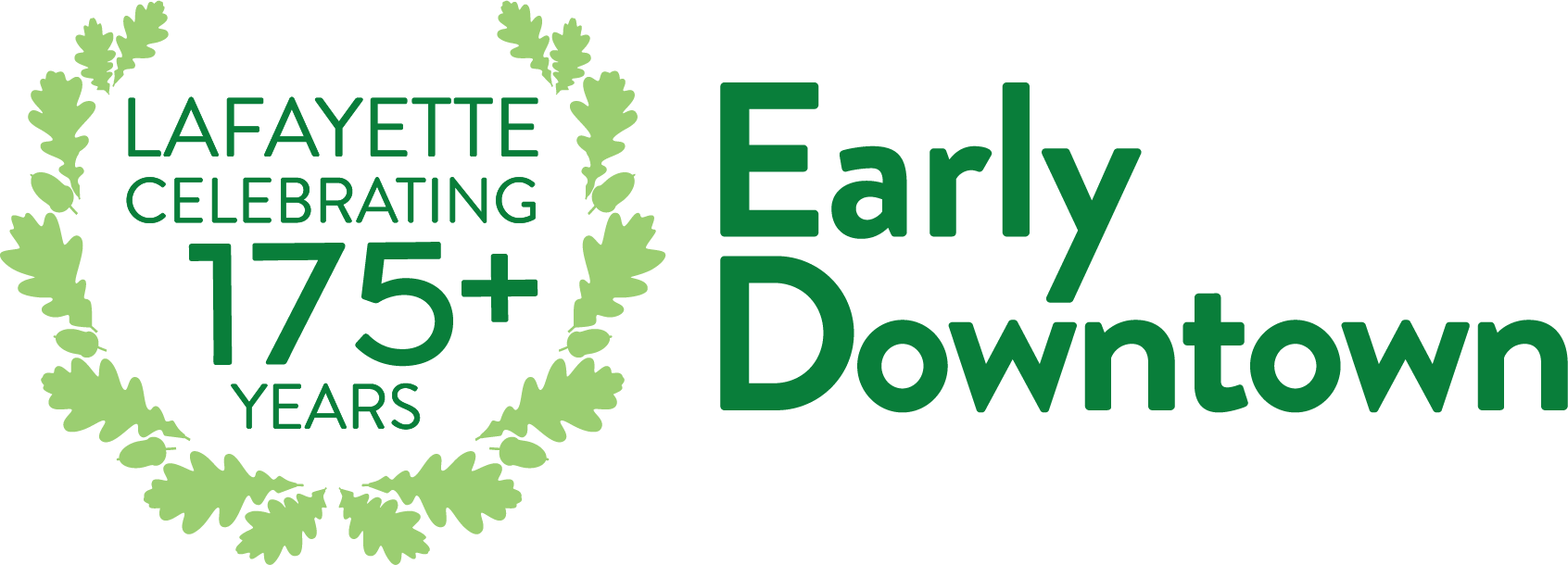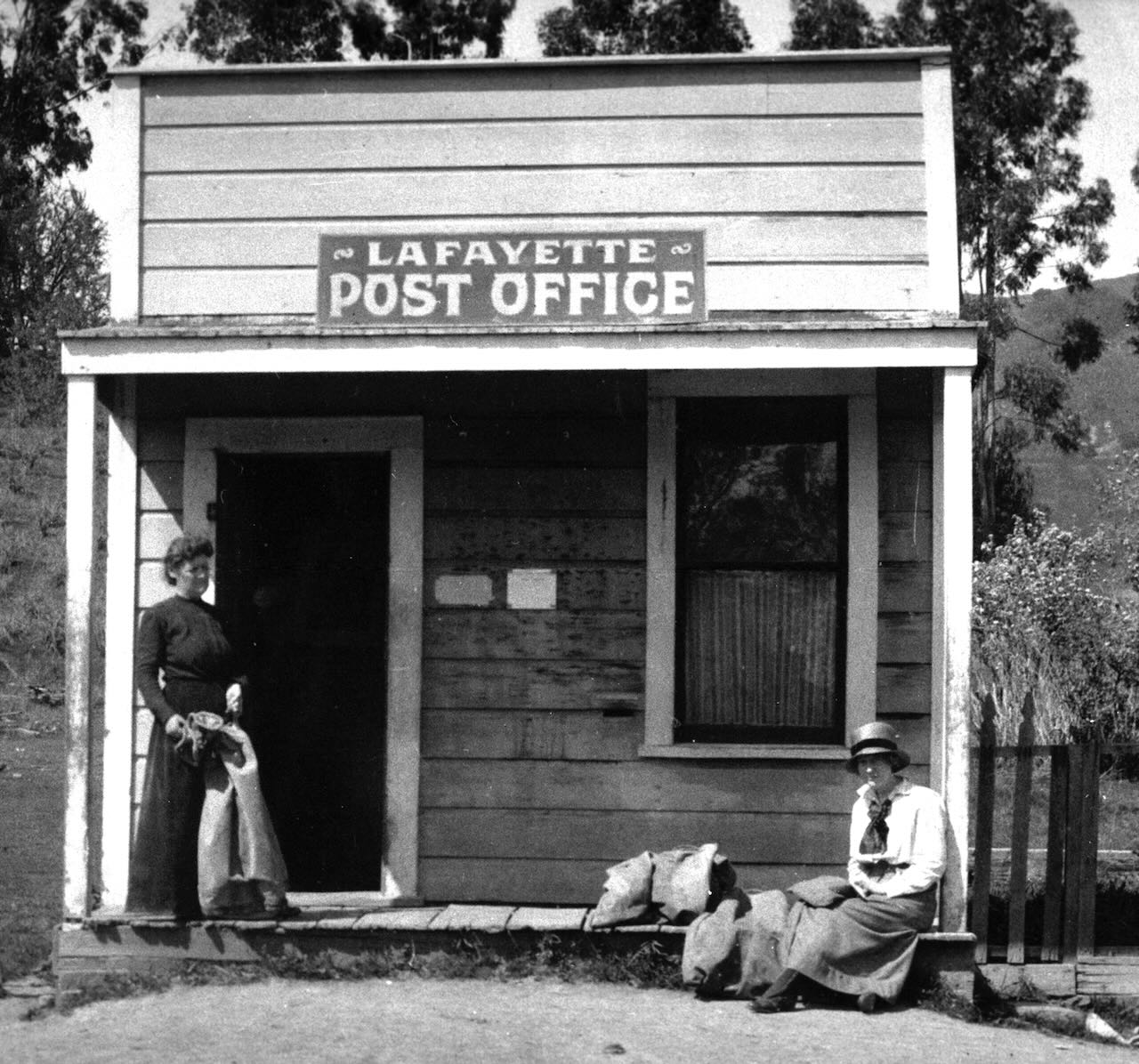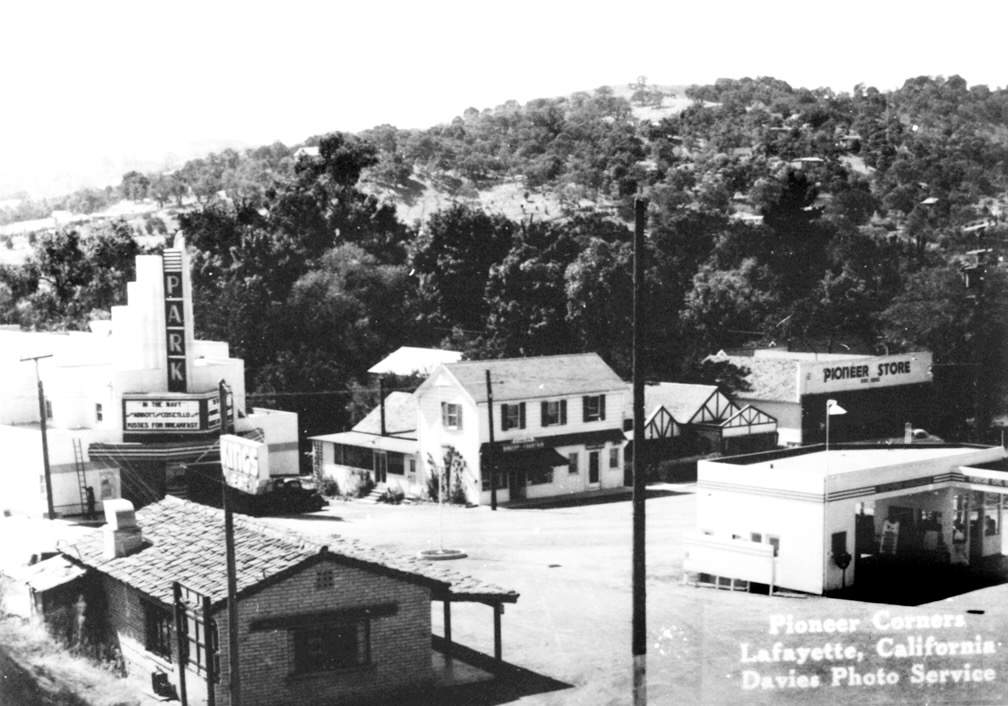When Elam Brown first settled on the Rancho Acalanes in 1847, he chose only to run cattle, doubting that he could grow crops in an area where there was little rainfall for half of the year. However, the following spring, he planted wheat in the valley. Within a few years Contra Costa County would become the greatest wheat-producing area in the state.
Nathaniel Jones, who had accompanied Brown’s wagon train and married Margaret Allen’s daughter Elizabeth, came to the area to farm. Other early settlers included the Thomson, Bradley, Hough, Lamp, and Allen families. By the early 1860s, the town included Brown’s grist mill, a store, a school, a blacksmith shop, and a hotel, all of which were located arounds the plaza, a 100 foot by 150 foot triangular piece of land which the Browns had deeded to the town in 1864.
Three hotels were built in the vicinity of the Plaza Park beginning with Milo Hough’s Hotel in 1853. Hough operated the hotel for several years before selling it to Benjamin Shreve. Later hotels were built at the intersection of Mt. Diablo Boulevard and Moraga Road. A hotel at this location owned by Norman Hastings burned down in 1892. A third hotel built by Phillip Lamp suffered the same fate in 1925. No further hotels were built on ‘hotel corner”.
This photograph from the early 1900s shows the buildings on what is now Mt. Diablo Boulevard. Pictured here are, from left to right, Good Templar’s Church, the post office (the building with the window), Plaza Square (fenced), and Lamp’s Hotel, on the corner of Mt. Diablo Boulevard and Moraga Road. The sign on the roof advertises Golden West Beer.
In the early days, the Wayside Inn was known as a “first class” hotel and tavern. Edward J. Brady built the two-story structure in 1894, when Lafayette was a stopping point for cattlemen driving their stock over the Berkeley-Oakland hills to the market. Dusty cowboys needed a place to quench their thirst and rest overnight before the hard ride over the hills.
This post office was moved from its first location in the Pioneer Store to this building, located on Mt. Diablo Boulevard. Carrie Van Meter was postmistress here from 1904-1927. She is pictured on the porch with her daughter Pearl. Home mail delivery would not be available for many more years, so mail was picked up at the post office. The post office also housed 60 books which could be borrowed so Carrie served as the town’s first librarian.
In 1921, Pat Medau bought the Wayside Inn for $2,850. Medau was a Spanish American War veteran who married Lizzie Flood of Lafayette in 1901. He opened a meat market in the building. In 1925, he moved his meat market to Mt. Diablo Boulevard and opened an ice cream parlor in the old inn. Lizzie Medau and her grandson Rothery McKeegan are seen in this photograph.
Water was needed to fight fires. A Model T truck frame was purchased c. 1920, outfitted as a fire truck, and named Old Betsy, serving Lafayette during the 1920s and 1930s. It was sold and stored in Earl Sanko’s barn in Pleasant Hill. The Lafayette Fire District had three trucks in the 1930s fire house on Moraga Road. In 1977, Old Betsy was rediscovered and purchased by some Lafayette residents. She is on display at the Lafayette Library and Learning Center. Old Betsy is pictured on the right in the photograph.
Plaza Park in the 1940s showing King’s Restaurant, the Park Theater, the Wayside Inn, and the Pioneer Store as well as a gas station on the right.







